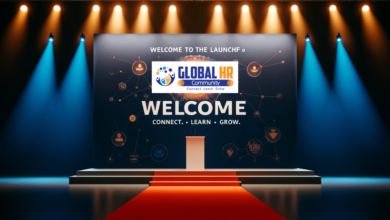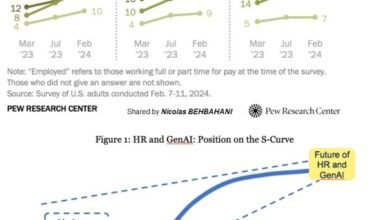
Source | www-myhrfuture-com.cdn.ampproject.org | Ben Searle | Caroline Styr
An AI-powered world
“Our AI-powered tool will help you make data-driven decisions. Can we call to see how we can help you?” – reads the umpteenth email in the HR manager’s inbox from various HR vendors.
When it comes to AI-powered insights, there are many concerns floating around regarding data privacy, data completeness, and of course, matters of integrity and welfare. On the other hand, every department seems to be using AI and data to solve their problems: marketing, finance, product teams, the list goes on… so, why shouldn’t HR follow the trend?
AI has had a profound impact across many functions, for example: marketing now uses predictive analytics to automate campaigns without human intervention so that it can act 24/7; and finance applies AI in their investments, expenses, and case evaluations. Of course, HR is also already successfully using AI, especially in Talent Acquisition and L&D through recommendations for both employees and employers, as well as in the budding areas of People Analytics and Workforce Planning. And yet, despite early successes and headline-grabbing use cases in HR, there are specific challenges facing HR which has led many to think, “ “perhaps HR just isn’t mature enough yet”…
Googling “HR maturity model” retrieves over 20 million results from across the internet, many of which discuss the strategic and business-integrated future of the function. Almost entirely, the upper echelons of these models can be reached after adopting cross-functional and AI-powered predictive analytics, assuming vast collections of data are available for HR to work with. However, according to research from KPMG, “58% of CEOs still see HR as an administrator rather than a value driver”. What we see here is an ‘impact gap’ – between what HR is capable of and the value it is currently perceived to deliver for the business.
Let’s take a closer look at some unique challenges that HR must overcome in order to deliver value with AI-powered decision making.
Challenge one: Humans are complex, resources are complex
By its nature, technology thrives in well-defined environments, be that the data, the components, or the decisions to be made. Unfortunately, humans – the very H in HR – are notoriously complex and hard to define.
Let’s dive a little deeper. What does it mean for an environment to be well-defined? On a high level, it translates to ‘unambiguous’ and ‘with a unique interpretation’. For an environment to be well-defined, we require, among others, complete visibility of all the components and their boundaries, an understanding of the behaviour of these components, and some notion of ‘what’s next’.






